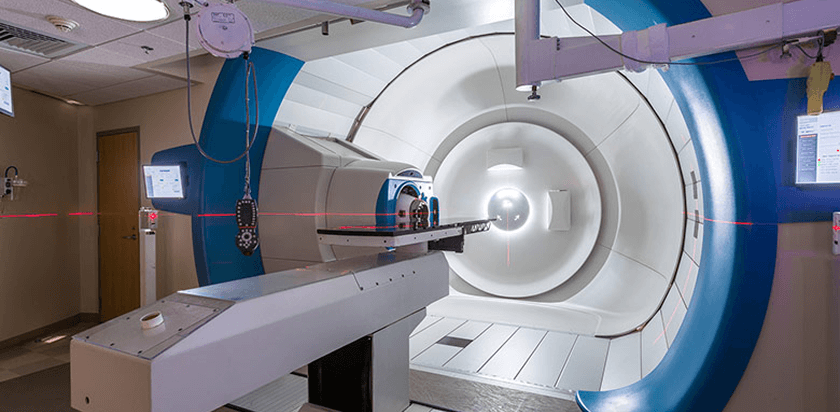
Latest Research Publications from the UF Health Proton Therapy Institute
Each research study published is one step forward to better understanding cancer and the effectiveness of cancer treatment options. Below are the latest publications by our physicians, either as primary investigators or co-authors with oncology experts from around the world.
Read our full research portfolio here.
Breast Cancer
Article Title:
Postmastectomy Radiation Therapy: An ASTRO/ASCO/SSO Clinical Practice Guideline September 2025
Authors:
Julie Bradley, MD, MHCDS, et al.
Why this is important:
If a mastectomy is required for a patient diagnosed with breast cancer, radiation treatment may be recommended to ensure all cancer cells surrounding the breast tissue in the chest wall and the lymph nodes are gone. Based on more recent research, Dr. Bradley and the other experts updated the recommendations on when radiation should be recommended to patients following surgery. Radiation is highly recommended for patients who have cancer cells found in the lymph nodes and when the disease is more advanced. However, there are many other possible cases where radiation may be recommended, and they are discussed in more detail in this clinical practice guideline.
Article Title:
Radiation-Induced Acute Lung Pneumonitis After Pencil-Beam Scanning Proton Treatment for Breast Cancer: Correlation With Dose-Volume Parameters and Optimization Objectives to Reduce Lung Toxicities August 2025
Authors:
The UF Health Proton Therapy Institute Medical Physics team - Jiyeon Park, PhD, Yawei Zhang, PhD, Hardev S. Grewal, PhD, Mohammad Saki, DSc, PhD, Twyla Willoughby, PhD, FAAPM, Perry B. Johnson, PhD, and Julie Bradley, MD, MHCDS, and Nancy P. Mendenhall, MD, FACR, FASTRO.
Why this is important:
This article outlined the UF Health Proton Therapy Institute research to better understand and improve breast cancer treatments with pencil-beam scanning, the most advanced method of delivering proton beam therapy. When the data showed that some patients developed inflammation of the lung tissue, the team analyzed the data to determine how to adjust the treatment plans and radiation dose to the lung tissue in order to limit the instances of this potential side effect, even in few cases.
Pediatric Cancer
Article Title:
Dental Adverse Effects Following Multimodality Treatment for Head and Neck Rhabdomyosarcoma: Results of a Trans-Atlantic Multicentre Study September 2025
Authors:
Daniel Indelicato, et al.
Why this is important:
There has not been much research done on the effects of cancer treatment on the teeth and gums of children treated for head and neck cancers. Luckily, treatments have improved and many children are thriving for years after treatment. However, this article highlighted that a majority of the patients, studied anywhere from 2 to 29 years after treatment, had missing teeth, tooth decay, gingivitis and significant plaque buildup. This study highlights the importance of regular oral hygiene and follow-ups for dental care.
Gynecological Cancers
Article Title:
A systematic study on local failure events post chemoradiotherapy for cervical cancer: understanding the impact of baseline lateral anatomical compartment involvement September 2025
Authors:
Lucas Gomes Sapienza, MD, PhD, et al.
Why this is important:
It is important to identify the areas of the body most susceptible to the cancer returning in the same location. This publication reviewed cases of cervical cancer where patients had both chemo and radiation, including brachytherapy. In this study, the researchers successfully mapped the locations of the relapses that occurred most often and provided strategic information that can be utilized to tailor treatment and potentially reduce the chance of recurrence while minimizing side effects.

